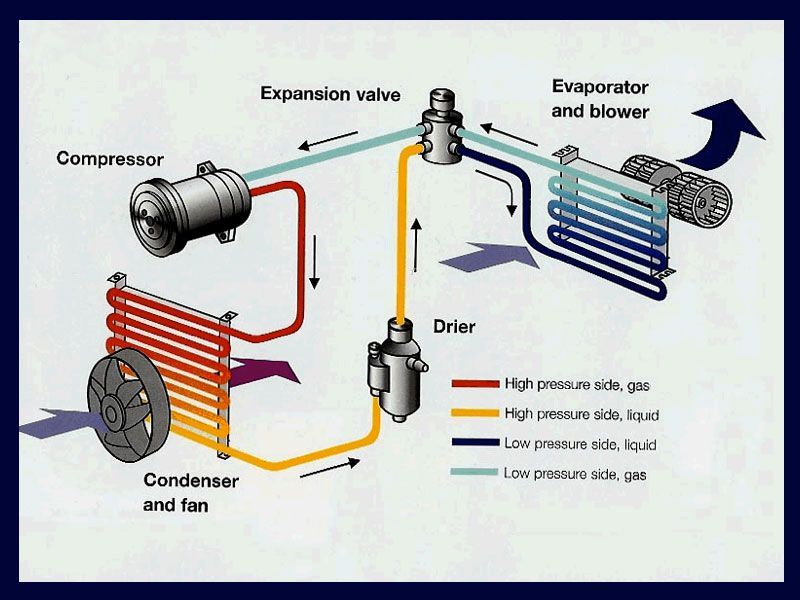Air Conditioning System In Automobiles
MARCH 1, 2016

Air Conditioning System
You’re stuck in traffic on an August afternoon and your auto air conditioning system is not up to the task. Sweat pours from your neck and runs down your back, turning your seat into a swamp of discomfort. Your legs feel like they’re stuck to the vinyl or grated by cheap velvet. Your hands are ready to slip from the steering wheel, and you’re glad that your eyebrows are keeping the sweat from getting into your eyes.
Automotive Air Conditioning System
What’s missing here? We all know it immediately: automotive air conditioning. It’s a staple of the modern world, with 99% of new cars equipped with it since 2010.
It’s also been with us for a long time. In 1939, Packard invented automotive AC and, in 1940, became the first car maker to offer pre-installed air conditioning. Although it lacked a thermostat, it was better than what we had before: a window. By 1969, air conditioned cars really caught on, with more than half of all new cars sold with AC included.
For many years, the refrigerant of choice was Freon (the brand name for R-12, a chlorofluorocarbon), but we now know this substance damages the ozone layer. Chlorofluorocarbons (CFCs) are now banned and an alternative (called R-134a or HFC-134a) has been used since 1996. Older cars need to be retrofitted with a new system that can use the safer refrigerant.
While air conditioning has been around for a while, it has worked pretty much the same way since its invention: air is cooled and humidity is removed. There are three main parts to the system: the compressor, condenser, and evaporator (see figure below).

Find out more about your air conditioning system:
More Services we offer:
Loading ...
Missing business hours data / Error occurred while getting the data.
Our Location
Have Trouble Finding Us?
Loading ...
Missing nap lines data / Error occured while getting the data.
